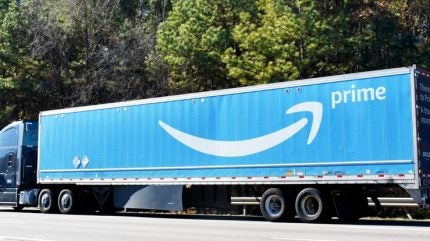
The upcoming Amazon Prime Day 2025 arrives the United States amid widespread concern over shifting US-China trade policies, with tariff uncertainty casting a shadow over pricing, supply chains and sales strategies.
Despite a temporary reduction in tariffs on Chinese imports, many e-commerce sellers and retail giants such as Amazon, Walmart and Target remain cautious ahead of one of the year’s biggest online shopping events.

Discover B2B Marketing That Performs
Combine business intelligence and editorial excellence to reach engaged professionals across 36 leading media platforms.
Retailers navigate shifting trade rules and supply chain strain
Retail executives have repeatedly flagged the volatile tariff landscape as a top risk for their operations.
Amazon’s CFO Brian Olsavsky said the company’s latest forecast reflects “the general uncertainty” in global trade. His comments echoed warnings from Walmart and Best Buy leaders, who cited unpredictability around tariff levels and timing as a challenge for strategic planning.
The U.S.-China tariff standoff had reached a peak earlier this year when import duties on Chinese goods soared to 145%. That prompted some brands to consider scaling back participation in Prime Day.
A late-May agreement reduced those tariffs to 30%, offering temporary relief. Still, concerns remain as the legal status of tariffs continues to fluctuate, with pending court rulings expected to shape the near-term trade environment.

US Tariffs are shifting - will you react or anticipate?
Don’t let policy changes catch you off guard. Stay proactive with real-time data and expert analysis.
By GlobalDataPattern, a commerce accelerator that works with brands across online marketplaces, reported scrambling to restock U.S. inventories after the tariff rollback.
“We were on the precipice,” said Brett Bardsley, the company’s Chief International Officer, describing how airfreight and expedited shipping were used to fill gaps caused by earlier trade disruptions.
Prime Day preparations continue despite pricing pressure
For many sellers, Prime Day remains a high-stakes opportunity. More than 80% of Amazon Prime members surveyed in May indicated they plan to shop during the event—up from 68% in 2024—according to Tinuiti.
Amazon is expected to stretch the sale across four days, doubling last year’s duration.
Still, not all brands are equally positioned. Companies heavily reliant on Chinese manufacturing are weighing whether they can offer competitive discounts while absorbing a 30% tariff.
Others, like Flaus, a maker of electric flossers, say the lowered tariffs cleared the way for full Prime Day participation without raising prices—for now.
Amazon has said it is pleased with the response from selling partners and is working to help them adapt. But categories like electronics, which have tighter margins and higher exposure to Chinese sourcing, may proceed cautiously.
Amazon stock and broader retail sector face mixed outlook
Shares in Amazon rebounded sharply in May after the tariff deal, gaining 11% for the month. That followed months of volatility tied to trade developments and investor concerns about rising costs and consumer demand.
The stock remains just below a key technical buy point as of early June.
While Amazon’s e-commerce platform has not seen a significant rise in average selling prices, other retailers are less optimistic. Walmart’s CFO John David Rainey recently warned that tariffs remain “too high,” suggesting that shoppers could see price increases in the months ahead.
The Trump administration, however, has pushed back against such claims, arguing that the current tariff policy is manageable for most businesses.
Amazon’s CEO Andy Jassy maintains that the company is well-positioned to gain market share during uncertain periods, citing its performance during past disruptions.
Analysts say that while summer sales could see a lift from the tariff reprieve, the broader retail sector must still contend with unresolved trade tensions, inflationary pressure and shifting consumer sentiment.
As the Supreme Court prepares to weigh in on the legality of current tariffs, industry watchers say retail strategies for the rest of 2025 will likely hinge on how trade policies evolve—and whether businesses can continue to absorb new costs without passing them on to consumers.
Navigate the shifting tariff landscape with real-time data and market-leading analysis. Request a free demo for GlobalData’s Strategic Intelligence here.





